Similar presentations:
Financial accounting theory
1. FINANCIAL ACCOUNTING THEORY
• Purpose: To create an awareness of thefinancial reporting environment in a
market economy
© 2006 Pearson Education Canada Inc.
1-1
2. Chapter 1 Introduction
© 2006 Pearson Education Canada Inc.1-2
3. Some Historical Perspective
• Paciolo, 1494• English Corporations Acts
– Compulsory audit
• Developments in the United States
– Corporate income tax, 1909
– SEC, 1934
– The search for accounting principles
© 2006 Pearson Education Canada Inc.
1-3
4. Organization of the Book
© 2006 Pearson Education Canada Inc.1-4
5. Information Asymmetry
• Two Main Types– Adverse selection
• Persons with an information advantage exploit
this advantage
– Insider trading
– Moral hazard
• Manager knows his/her actions in managing
firm but shareholders do not
– Manager shirking
© 2006 Pearson Education Canada Inc.
1-5
6. User Decision Problem
• In Presence of Adverse Selection– Rational investment decision
• In Presence of Moral Hazard
– Motivate and evaluate manager performance
© 2006 Pearson Education Canada Inc.
1-6
7. Role of Financial Reporting
• To Control Adverse Selection– Decision usefulness
• Full and timely disclosure
• To Control Moral Hazard
– Net income as a managerial performance
measure
• Sensitive and precise net income
© 2006 Pearson Education Canada Inc.
1-7
8. The Fundamental Problem Of Financial Accounting Theory
• The best measure of net income to controladverse selection not the same as the best
measure to motivate manager performance
– This implies that investor and manager interests
conflict
– Standard setting viewed as mediating the
conflicting interests of investors and managers in
financial reporting
© 2006 Pearson Education Canada Inc.
1-8
9. ENRON CORP.
Implications for Accountants© 2006 Pearson Education Canada Inc.
1-9
10. Enron, Cont’d.
• Special Purpose Entities Associatedwith Enron
– On Enron Books
• Dr Note Receivable
Cr. Capital Stock
$1.1 (billion)
$1.1
– Capital stock issued to Special Purpose Entity
(SPE) (a limited partnership)
– SPE owned by Enron officers
© 2006 Pearson Education Canada Inc.
1-10
11. Enron, Cont’d.
• GAAP requires amounts due fromshareholders be deducted from
shareholders’ equity
– Is a limited partnership, owned by Enron
officers, a shareholder?
© 2006 Pearson Education Canada Inc.
1-11
12. ENRON, Cont’d.
• Off-Balance Sheet Financing– On SPE books:
• Cash
xxx
Debt
xxx
SPE borrows money, using Enron stock as
security.
• Note payable to Enron xxx
Cash
xxx
Cash is paid to Enron to reduce its note
receivable from SPE
– Enron has the cash but debt does not
appear on its books
© 2006 Pearson Education Canada Inc.
1-12
13. ENRON, Cont’d.
• Enron Renders Services to the SPE– A/C receivable
$628 (millions)
Net income
$628
Services rendered to SPE 1997-2000 incl.
– If Ltd. partnership had been consolidated,
revenue only recognized when earned outside
the consolidated entity.
© 2006 Pearson Education Canada Inc.
1-13
14. ENRON, Cont’d
• Enron records its share of SPE profits– Investment in SPE
xxx
Net income
xxx
SPE profits include increases in fair value of its
holdings of Enron shares.
Result: Enron includes increases in the market
value of its shares in its net income.
© 2006 Pearson Education Canada Inc.
1-14
15. ENRON, Cont’d
• In 3rd quarter, 2001, Enron Recognizedthat the SPE should be Consolidated:
– Dr Shareholders’ equity $1.1
Cr Notes receivable
$1.1
To deduct loan to SPE from shareholders’
equity
– Also, restate previous 4 years’ earnings to
reduce by $628 millions
© 2006 Pearson Education Canada Inc.
1-15
16. ENRON, Cont’d
• Impacts of the Writeoffs–
–
–
–
–
–
No effect on operating cash flow
Debt/equity ratio, debt covenants affected
Loss of investor confidence
Share price falls from $90 to 66¢
bankruptcy protection 2 Dec/01
SEC, Dep’t of Justice, Congressional
Investigations
– Where were the auditors? The Board?
© 2006 Pearson Education Canada Inc.
1-16
17. ENRON, Concl.
• Points to Think About– Crucial role of investor confidence in
financial information
– Role of auditor in adding credibility to
financial information
– Off-balance sheet financing
– Earnings management
© 2006 Pearson Education Canada Inc.
1-17












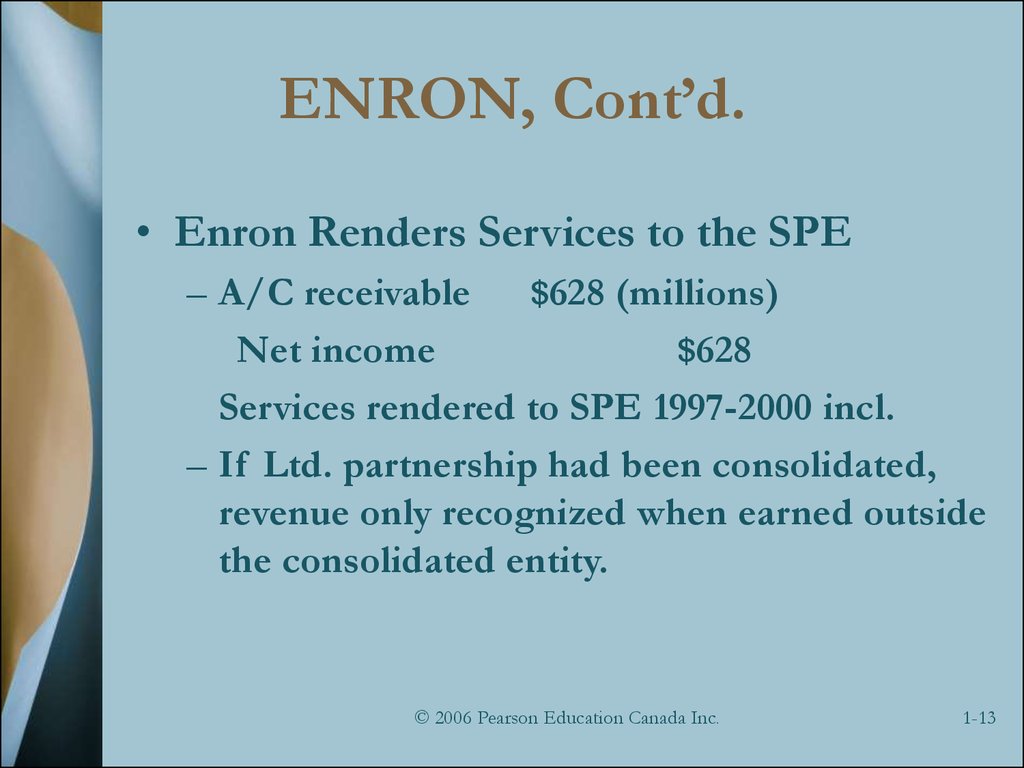
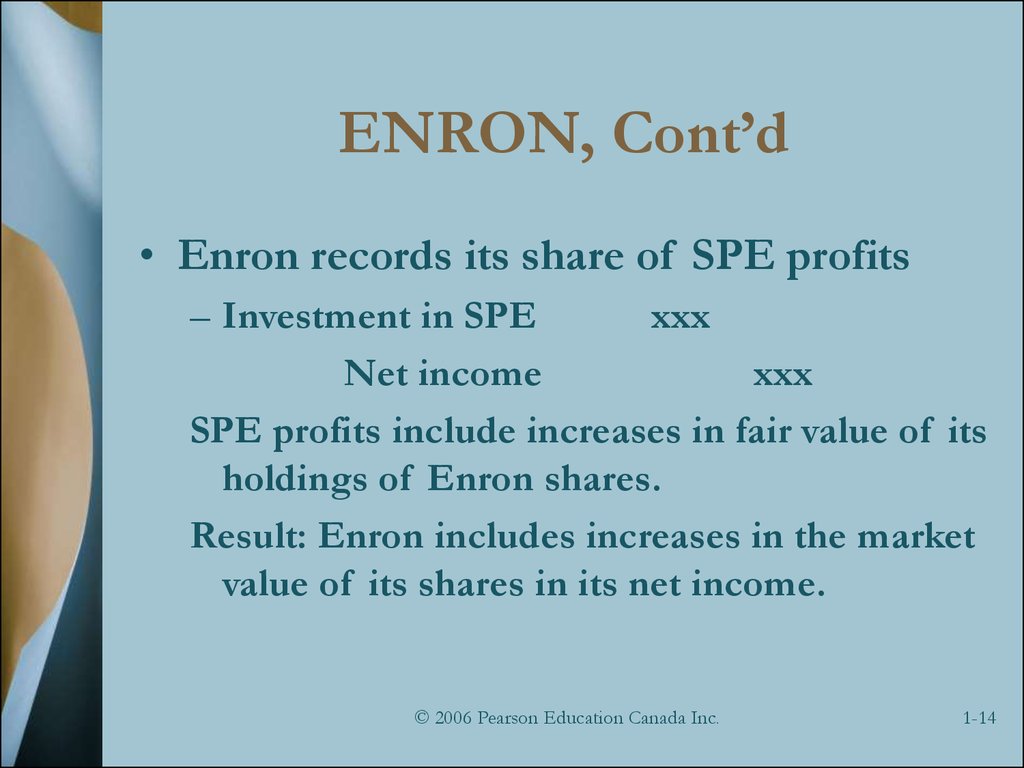
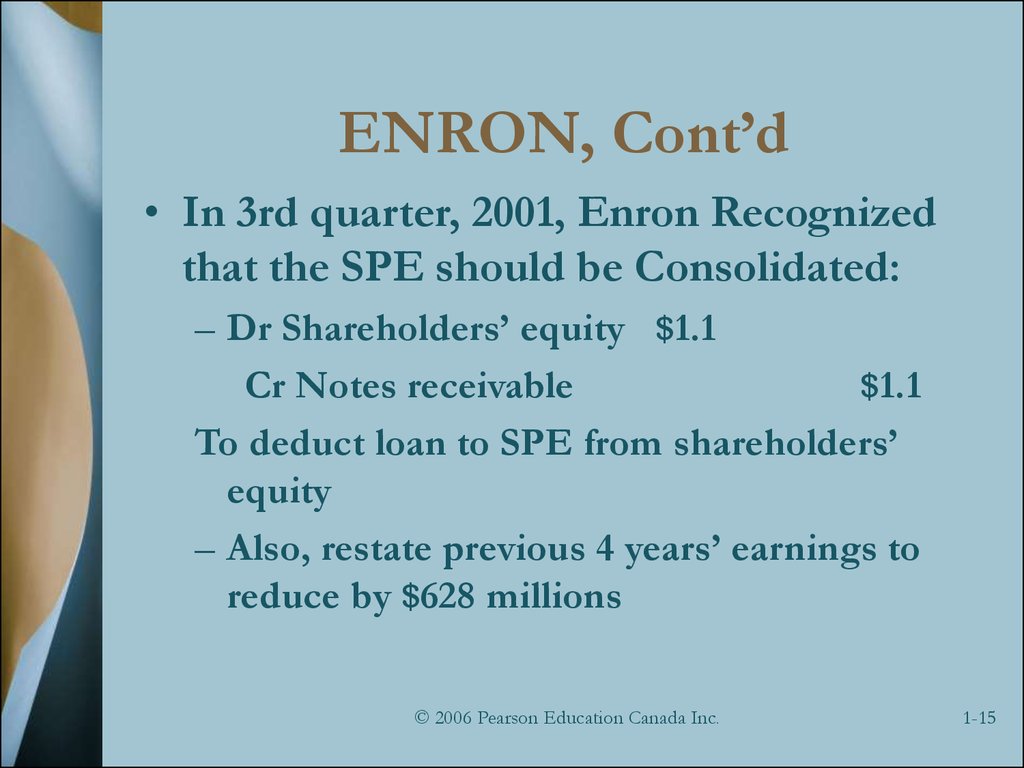
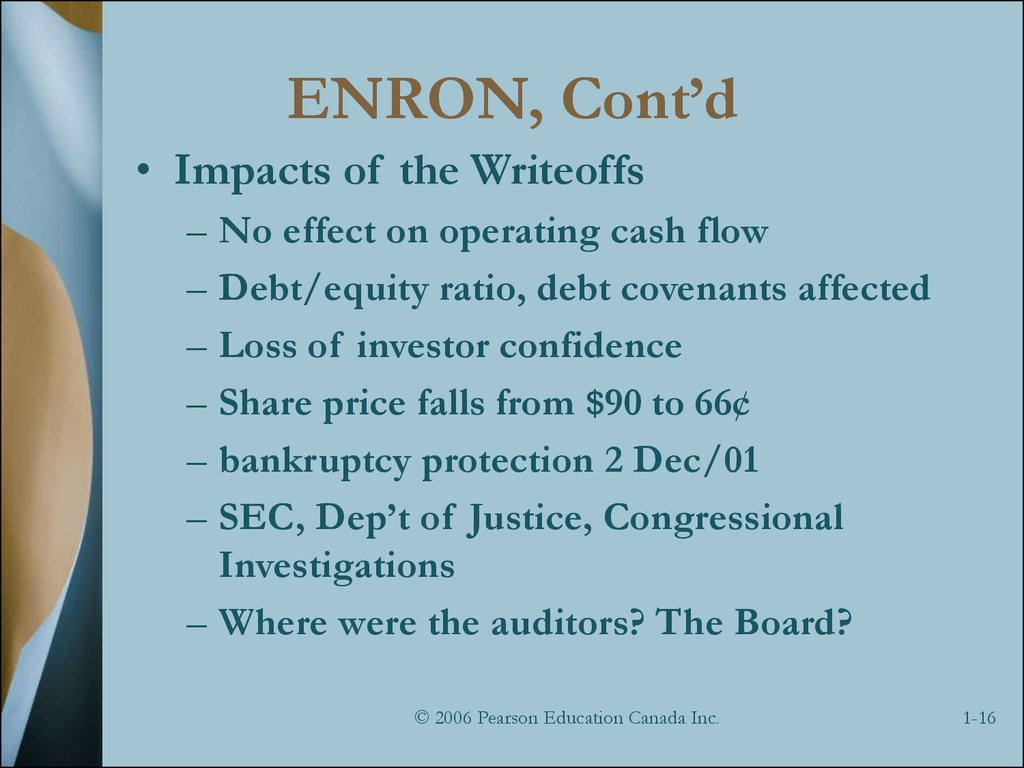
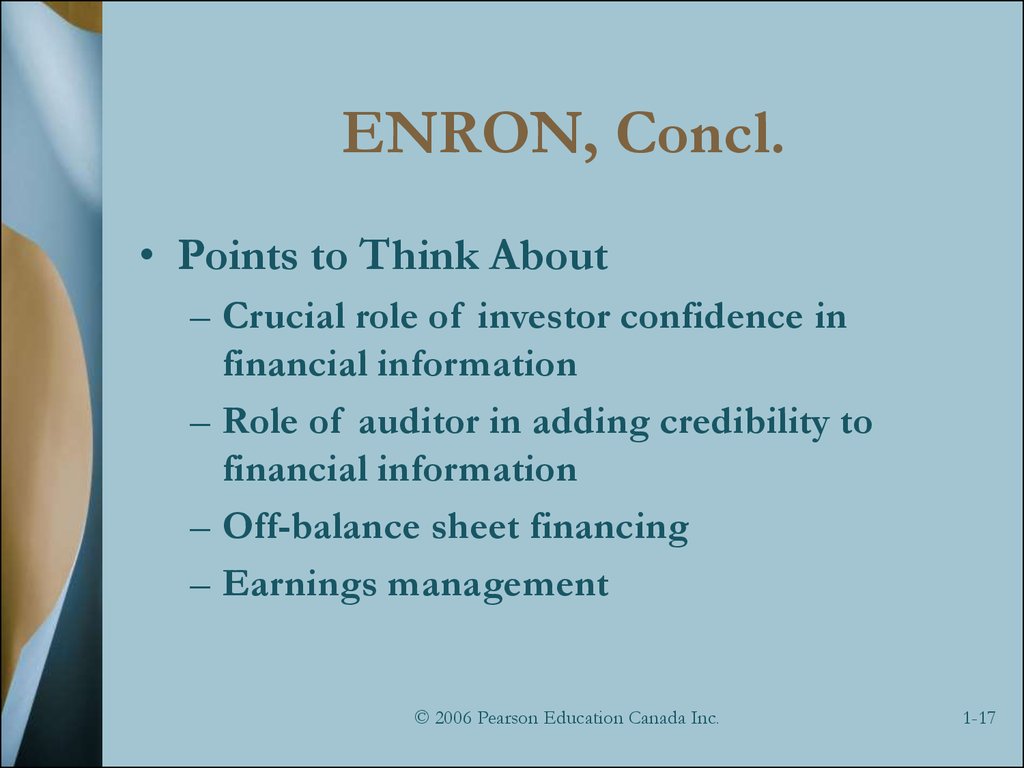
 finance
finance








